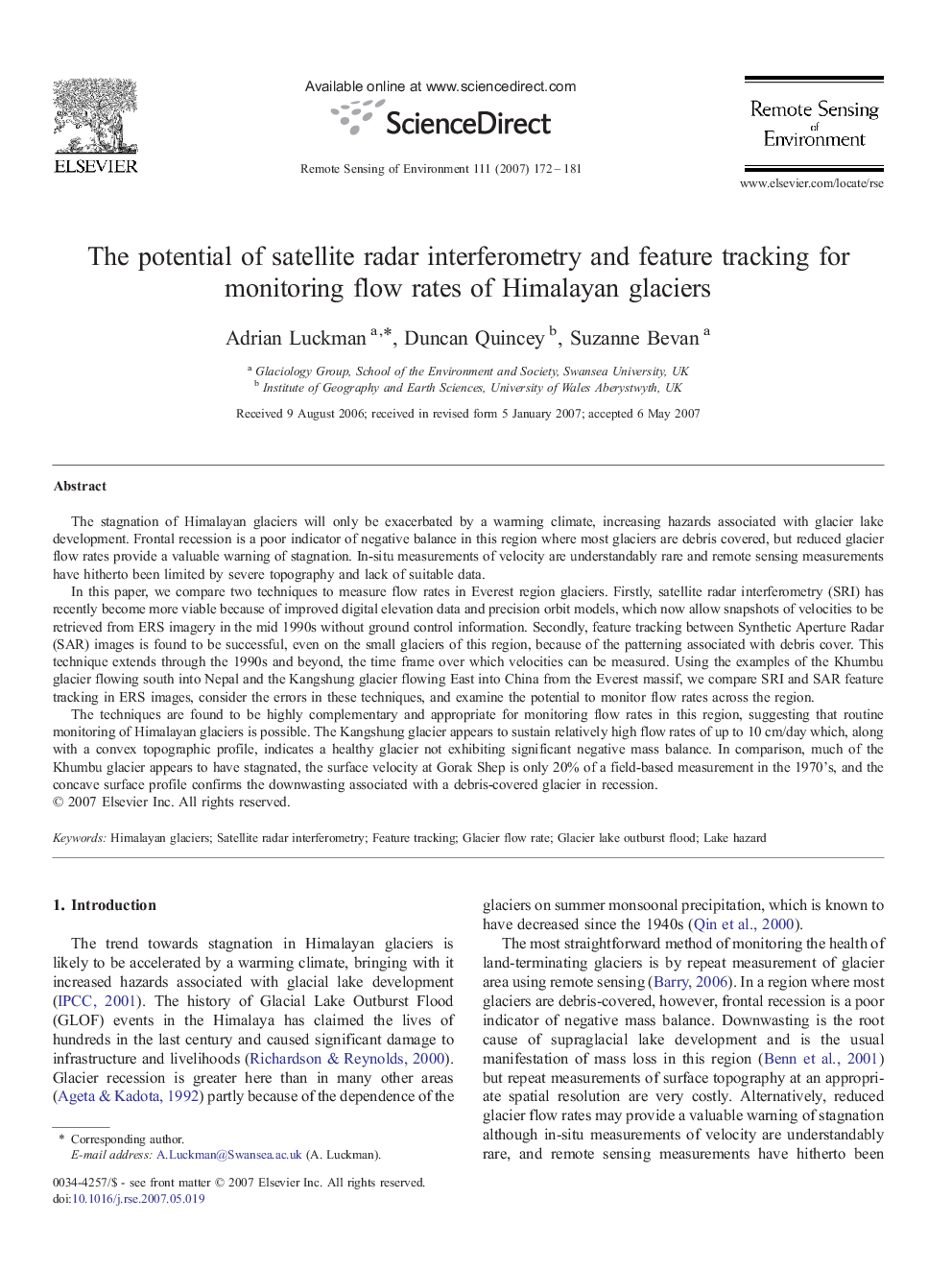| کد مقاله | کد نشریه | سال انتشار | مقاله انگلیسی | نسخه تمام متن |
|---|---|---|---|---|
| 4460417 | 1621335 | 2007 | 10 صفحه PDF | دانلود رایگان |

The stagnation of Himalayan glaciers will only be exacerbated by a warming climate, increasing hazards associated with glacier lake development. Frontal recession is a poor indicator of negative balance in this region where most glaciers are debris covered, but reduced glacier flow rates provide a valuable warning of stagnation. In-situ measurements of velocity are understandably rare and remote sensing measurements have hitherto been limited by severe topography and lack of suitable data.In this paper, we compare two techniques to measure flow rates in Everest region glaciers. Firstly, satellite radar interferometry (SRI) has recently become more viable because of improved digital elevation data and precision orbit models, which now allow snapshots of velocities to be retrieved from ERS imagery in the mid 1990s without ground control information. Secondly, feature tracking between Synthetic Aperture Radar (SAR) images is found to be successful, even on the small glaciers of this region, because of the patterning associated with debris cover. This technique extends through the 1990s and beyond, the time frame over which velocities can be measured. Using the examples of the Khumbu glacier flowing south into Nepal and the Kangshung glacier flowing East into China from the Everest massif, we compare SRI and SAR feature tracking in ERS images, consider the errors in these techniques, and examine the potential to monitor flow rates across the region.The techniques are found to be highly complementary and appropriate for monitoring flow rates in this region, suggesting that routine monitoring of Himalayan glaciers is possible. The Kangshung glacier appears to sustain relatively high flow rates of up to 10 cm/day which, along with a convex topographic profile, indicates a healthy glacier not exhibiting significant negative mass balance. In comparison, much of the Khumbu glacier appears to have stagnated, the surface velocity at Gorak Shep is only 20% of a field-based measurement in the 1970's, and the concave surface profile confirms the downwasting associated with a debris-covered glacier in recession.
Journal: Remote Sensing of Environment - Volume 111, Issues 2–3, 30 November 2007, Pages 172–181